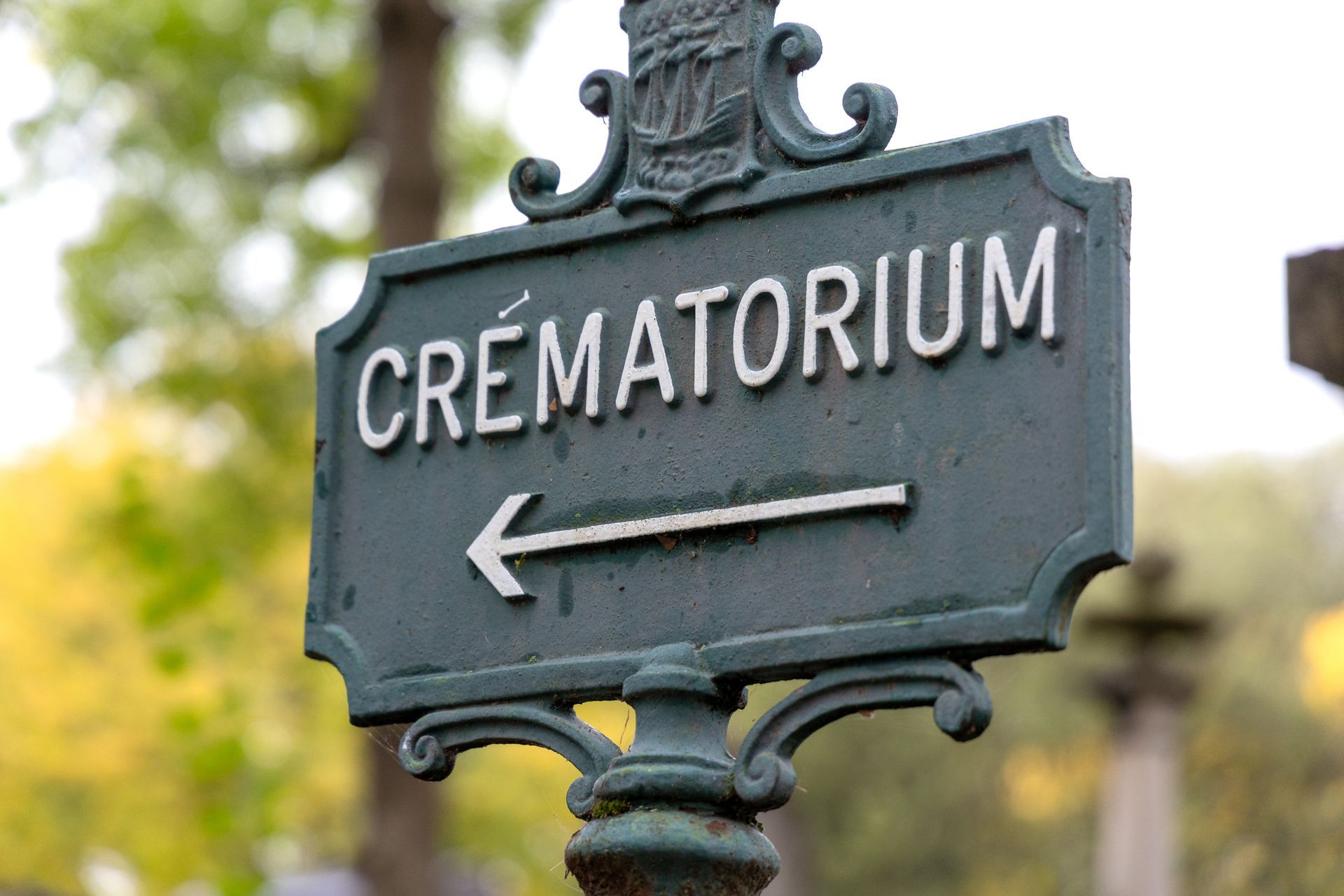Direct cremation
is a straightforward and affordable option for families looking for a simple way to honor their loved ones.
Unlike traditional funerals, direct cremation involves no formal service or visitation, focusing solely on the cremation process. It's a practical choice for those who prefer a minimalist approach or wish to plan a memorial at a later date.
This guide explains
how direct cremation works, its benefits, and what to expect during the
cremation process.
What Is Direct Cremation?
Direct cremation is a straightforward and affordable option for families seeking simplicity in honoring their loved ones. It involves cremating the deceased shortly after passing without the need for embalming, a viewing, or a formal funeral service.
Instead of a casket, the body is placed in a simple container for cremation. Once completed, the cremated remains—commonly called ashes—are carefully returned to the family.
One of the benefits of direct cremation is its flexibility. Families can hold a private memorial service, a celebration of life, or a scattering ceremony whenever and wherever it feels most meaningful.
Another benefit is that if loved ones are far away, they can make direct cremation arrangements online or over the phone.
Providers like
Rivercrest Cremation
in Oklahoma City and
Tulsa specialize in direct cremation
services, offering compassionate care and support during this difficult time.
This is paragraph text. Click it or hit the Manage Text button to change the font, color, size, format, and more. To set up site-wide paragraph and title styles, go to Site Theme.
How Does Direct Cremation Work?
The direct cremation process is simple and respectful, designed to provide families with an efficient way to honor their loved ones. It begins with transportation, where the deceased is moved from the place of passing to the crematory or funeral home.
Once at the crematory, the body is placed in a simple container designed for cremation. This step eliminates the need for an elaborate or costly casket.
The crematory container is placed in the cremation chamber, where intense heat reduces the body to ashes in a controlled environment. After the cremation, the ashes are collected and processed to ensure uniformity.
The ashes are placed in an urn or temporary container, depending on the family's preferences.
Finally, the ashes are returned to the family, often within a few days, allowing them to plan a memorial or scattering ceremony at their convenience.
Providers like Rivercrest Cremation manage every step of the process with the utmost professionalism and care, ensuring the family's wishes are honored with compassion.
What Are the Benefits of Direct Cremation?
Direct cremation offers several advantages that make it an appealing choice for families seeking a more straightforward way to honor their loved ones.
One of the primary benefits is affordability. Direct cremation is among the most cost-effective options because it eliminates expenses associated with embalming, caskets, and traditional funeral services. This can be a significant relief for families on a budget or those looking to avoid unnecessary costs.
Another key advantage is simplicity. The process is straightforward, reducing the stress and logistical challenges often accompanying traditional funerals. This simplicity allows loved ones to focus on healing and remembrance rather than overwhelming details during grief.
Flexibility is a standout feature of direct cremation. Families can plan memorials or celebrations of life at a time and place that feels most meaningful without the time constraints of a scheduled funeral. The choice is entirely theirs- an intimate gathering at home or a scattering ceremony in a cherished location.
Direct cremation also has eco-friendly benefits. It typically leaves a smaller environmental footprint than traditional burial, which involves embalming chemicals and land use for caskets and graves. For environmentally conscious families, this aspect of direct cremation is particularly appealing.
These advantages—affordability, simplicity, flexibility, and eco-friendliness—make direct cremation a thoughtful and practical option for many families seeking to honor their loved ones with dignity and care.
How Does Cremation Compare to Traditional Burial?
When deciding between cremation and traditional burial, it's essential to understand their key differences to make the best choice for your family's needs and values.
- Cost is a significant factor. Cremation, particularly direct cremation, is typically more affordable than traditional burial. By eliminating expenses such as embalming, caskets, and burial plots, cremation offers a cost-effective way to honor your loved one without compromising dignity.
- Another notable difference is the timeframe. Cremation provides flexibility, allowing families to delay memorials or celebrations of life until a time that works best for everyone. In contrast, traditional burials often occur within days of passing, requiring quicker planning and coordination.
- Space requirements also differ. Cremation does not necessitate a burial plot unless families choose to inter the ashes. This can be a meaningful choice for those who want a permanent resting place, but it is not a necessity. Many families opt to scatter ashes or keep them in an urn, which doesn't require land use.
- Environmental impact is increasingly a consideration for families. Cremation is often viewed as more sustainable than traditional burial, which involves embalming chemicals and using natural resources for caskets and graves. Additionally, eco-friendly cremation methods, like water cremation or flameless cremation, are emerging as greener alternatives.
Understanding these differences in cost, timing, space, and environmental impact can help families make informed decisions that align with their values, budgets, and preferences.
What Is the Cost of Direct Cremation?
Direct cremation costs vary depending on the provider and location. Still, it is generally one of the most affordable end-of-life options.
- Costs can range from $700 to $1,000, significantly less than traditional funerals or burials.
- Many providers, including Rivercrest Cremation, offer transparent pricing to help families budget effectively.
- Additional costs may include urns, transportation, or death certificates.
For those seeking
affordable cremation options, direct cremation offers excellent value.
How to Plan for Direct Cremation
Planning for direct cremation is a straightforward process that ensures your loved one is cared for with respect and dignity. Here's a step-by-step guide to help you navigate the process with confidence.
Choose a Provider
Start by selecting a trusted cremation provider or funeral home in your area. Providers like Rivercrest Cremation in Tulsa and Oklahoma City specialize in direct cremation services. They can offer the guidance and support you need during this difficult time. Research providers, read reviews, and ask questions to ensure you're comfortable choosing.
Complete Necessary Paperwork
Your chosen provider will guide you through the legal documentation required for cremation authorization. This may include forms related to the death certificate, permits, and other necessary authorizations. They will ensure everything is completed accurately and in compliance with local regulations.
Select an Urn or Container
Decide on the type of container for your loved one's ashes. Crematories typically provide a simple, temporary container at no extra cost. Still, many families prefer to purchase an urn for long-term storage or display. Consider what best suits your preferences and how you plan to honor or store the ashes.
Coordinate the Return of Ashes
Work with the provider to arrange how and when the ashes will be returned to your family. Some families prefer to pick them up in person, while others may choose delivery for convenience. Discuss these options with your provider to find what works best for you.
By following these steps, families can easily plan a direct cremation and focus on creating a meaningful way to remember their loved ones. Many providers also offer cremation planning guides, which can be invaluable resources during this time.
What Are Some Common FAQs About Direct Cremation?
Many families have questions when considering direct cremation. Here are some common concerns:
Can we still hold a memorial service?
Absolutely! A direct cremation gives you the flexibility to plan a memorial or celebration of life on your terms. Many families find comfort in hosting a service that reflects their loved one's unique personality, whether a formal gathering, a casual outdoor event, or a small, intimate ceremony. You can hold the service in your home, at a favorite park, or even at a place of worship. The timing is also up to you, allowing you to gather family and friends when it's most convenient.
Ideas to consider:
- A memory-sharing evening
with photos and stories.
- A themed gathering based on your loved one's passions, like a favorite sports team or hobby.
- A virtual service for those who can't attend in person.
Is embalming required?
No, embalming is not required for direct cremation. This is one of the reasons direct cremation is often more affordable and straightforward. The process is designed to respect the natural course without unnecessary interventions. This simplicity can bring peace of mind to families seeking an eco-friendly or minimalistic approach.
How long does the process take?
Typically, the process takes 3 to 7 days, but this can vary depending on legal paperwork, the provider's schedule, and local regulations. Your cremation provider can offer a more accurate timeline and help handle all necessary documents efficiently.
What you can do during this time:
- Begin planning a memorial or gathering.
- Notify extended family and friends.
- Reflect on ways to honor your loved one's life, such as creating a memory book or slideshow.
Can we witness the cremation?
In some cases, yes. Many crematories allow families to witness the cremation if it brings them peace or closure. However, this option depends on the provider's policies, so it's essential to ask about it. If witnessing isn't possible, ask the provider for a detailed explanation of the process to ensure your loved one is treated with care and dignity.
Tips for witnessing:
- Discuss the option with family members to ensure it aligns with their comfort levels.
- Consider bringing a small token, like a flower, to place in the cremation container as a farewell.
Understanding these
cremation FAQs
can ease concerns and clarify the process.
How Does Direct Cremation Support Personalization?
Can I Make Direct Cremation Arrangements Online?
Many direct cremation providers, including
Rivercrest Cremation, allow families to
make arrangements online. This convenient option simplifies the process and provides families flexibility during an emotionally challenging time.
Here's how it typically works:
- Step 1: Select a Provider
Visit the provider's website and explore their direct cremation services. Ensure the provider is licensed and offers transparent pricing.
- Step 2: Complete Required Documentation
Fill out the necessary forms, including the cremation authorization and information about the deceased. Most providers offer secure online portals for submitting these documents.
- Step 3: Choose Additional Services
Select any additional services or products, such as urns or keepsakes, that you may wish to purchase.
Providers often accept payments online through secure systems, allowing you to finalize arrangements quickly and easily.
- Step 5: Coordinate Details
After submitting your arrangements, the provider will confirm details, including transportation and the timeline for returning the cremated remains.
Online cremation planning provides families a straightforward and efficient way to handle arrangements without visiting a funeral home in person.
Final Thoughts on Direct Cremation
Although direct cremation is a straightforward option, it offers families ample opportunities to create meaningful, personalized tributes to their loved ones.
One way to honor a loved one is to scatter their ashes in a location that held special significance to them. Whether it's a favorite beach, a beloved hiking trail, or a cherished garden, this act allows families to connect with their memories in a profoundly personal way.
For tangible keepsakes, loved ones can incorporate ashes into unique mementos. Some options include:
Another advantage of direct cremation is its flexibility in planning memorials or gatherings. Families can organize events that reflect the deceased's individuality, whether a formal ceremony, a casual celebration of life, or a quiet family gathering. This freedom allows for thoughtful and creative tributes that truly capture the essence of the honored person.
By focusing on these personal touches, direct cremation empowers families to celebrate their loved ones in authentic and heartfelt ways, turning simplicity into something profoundly meaningful.


